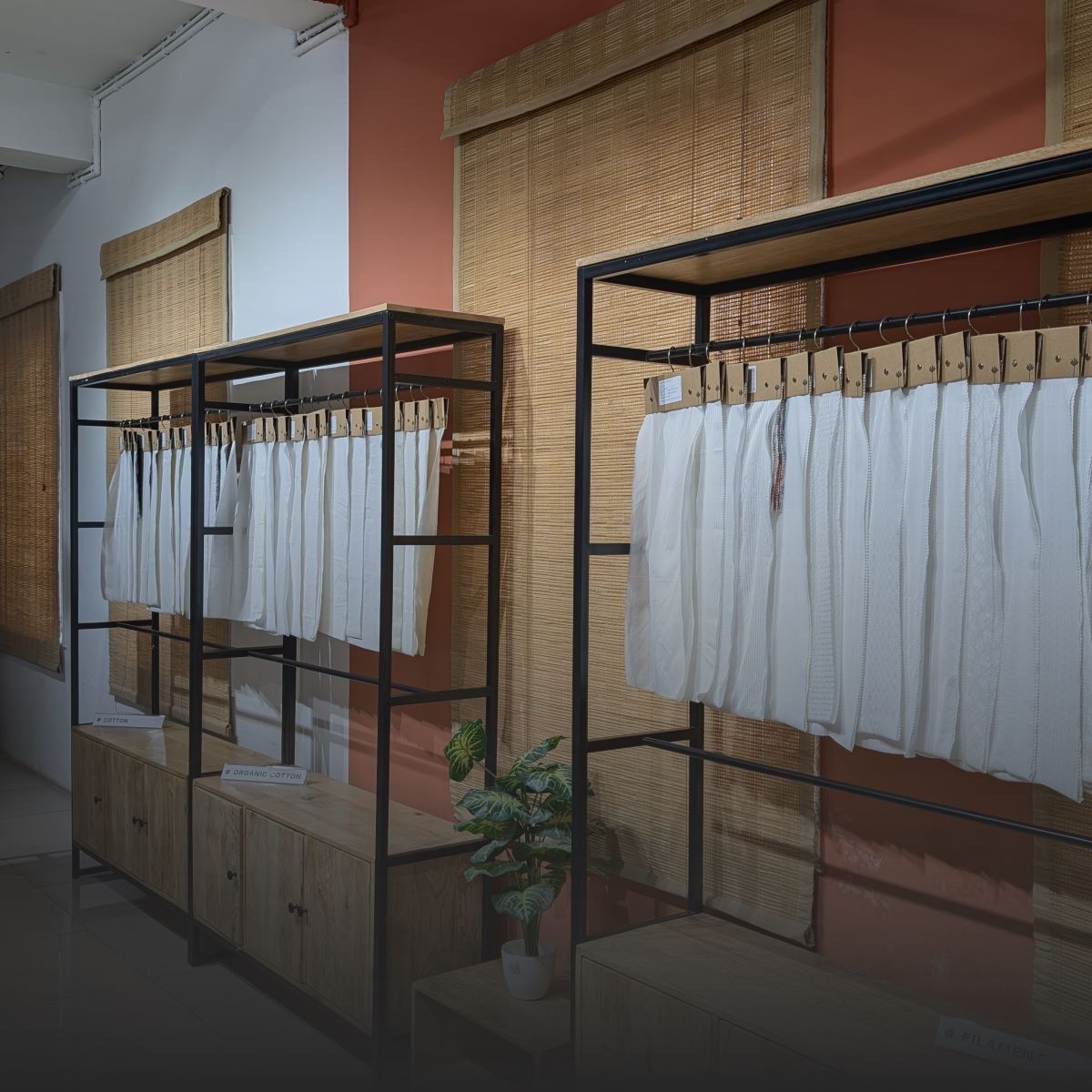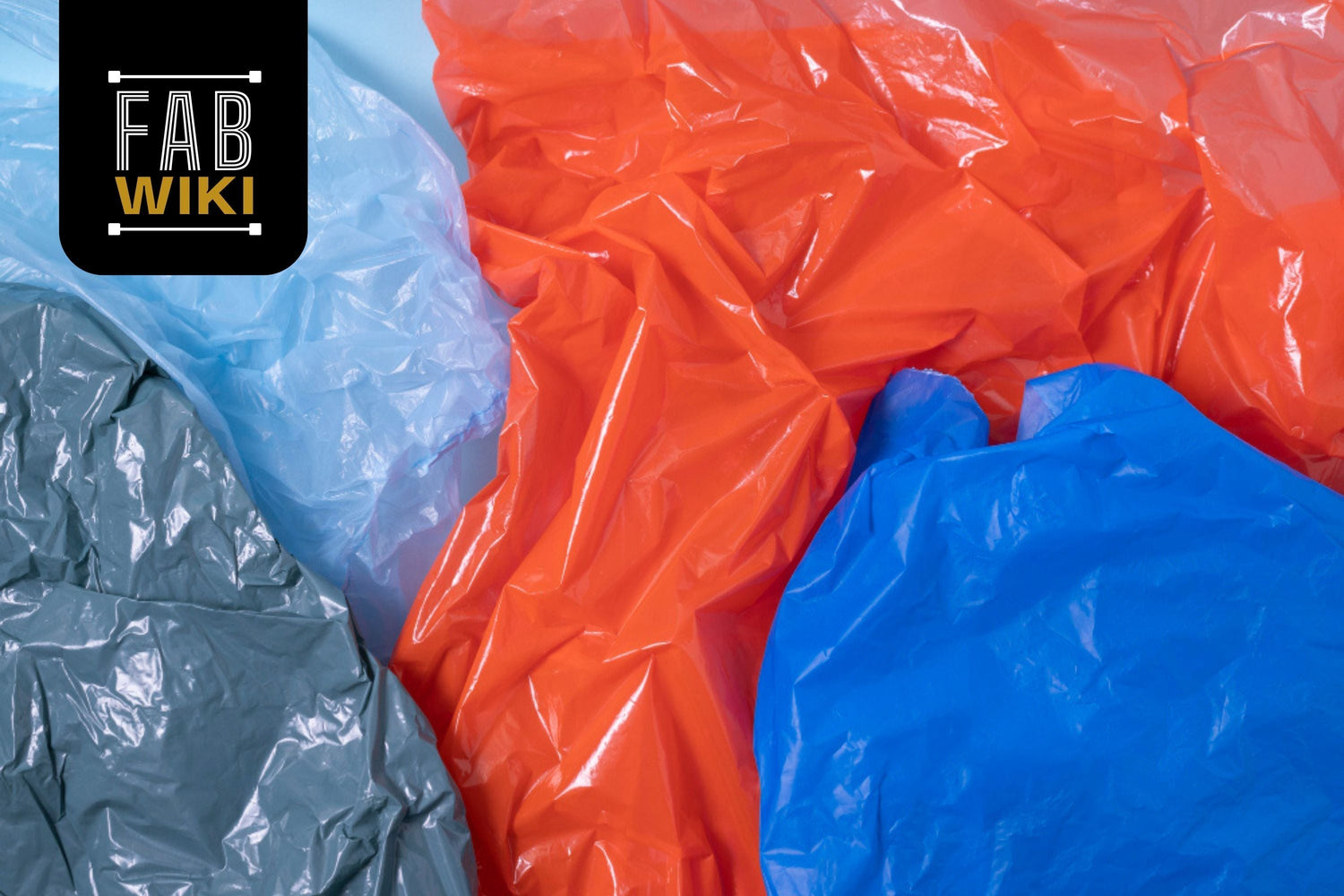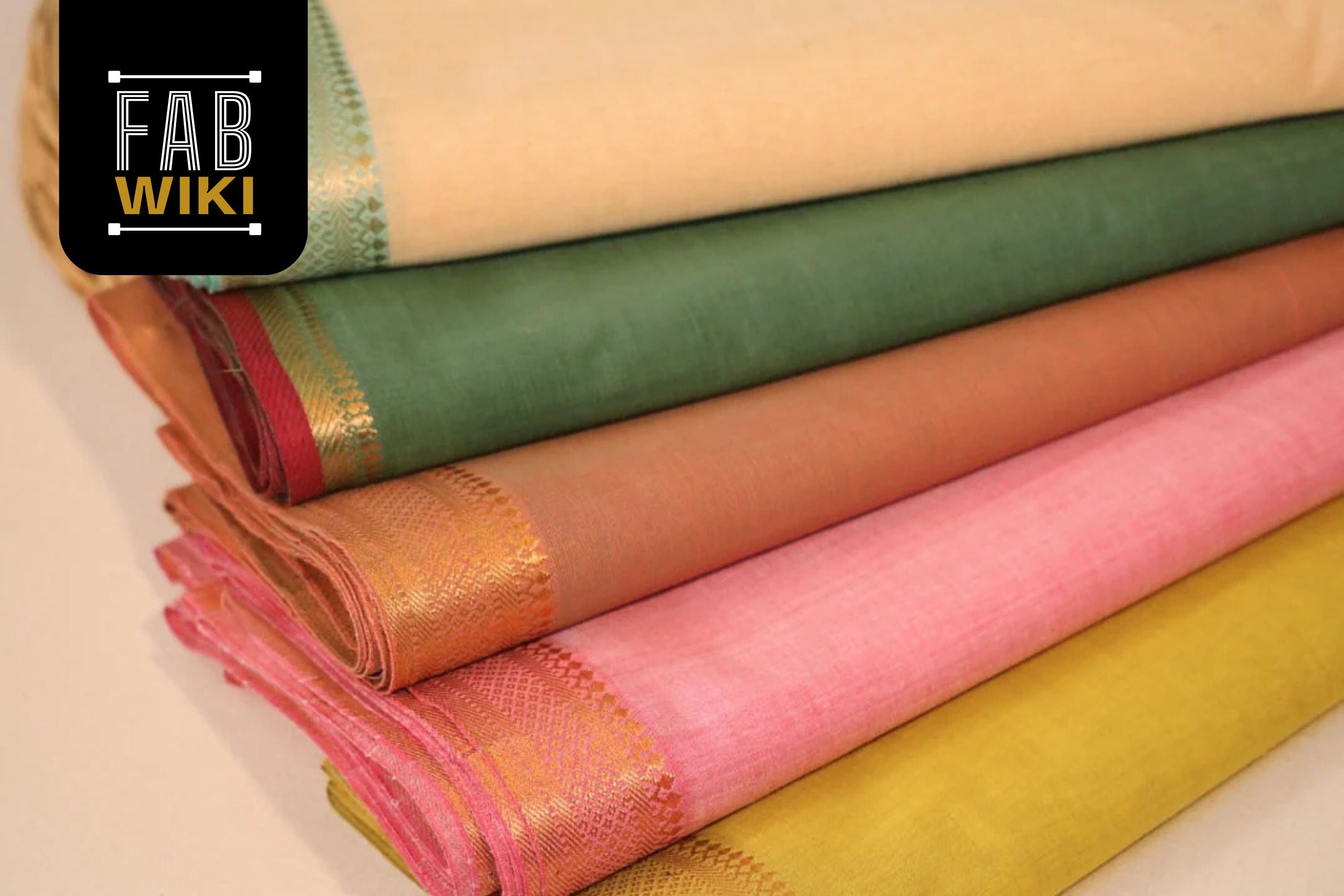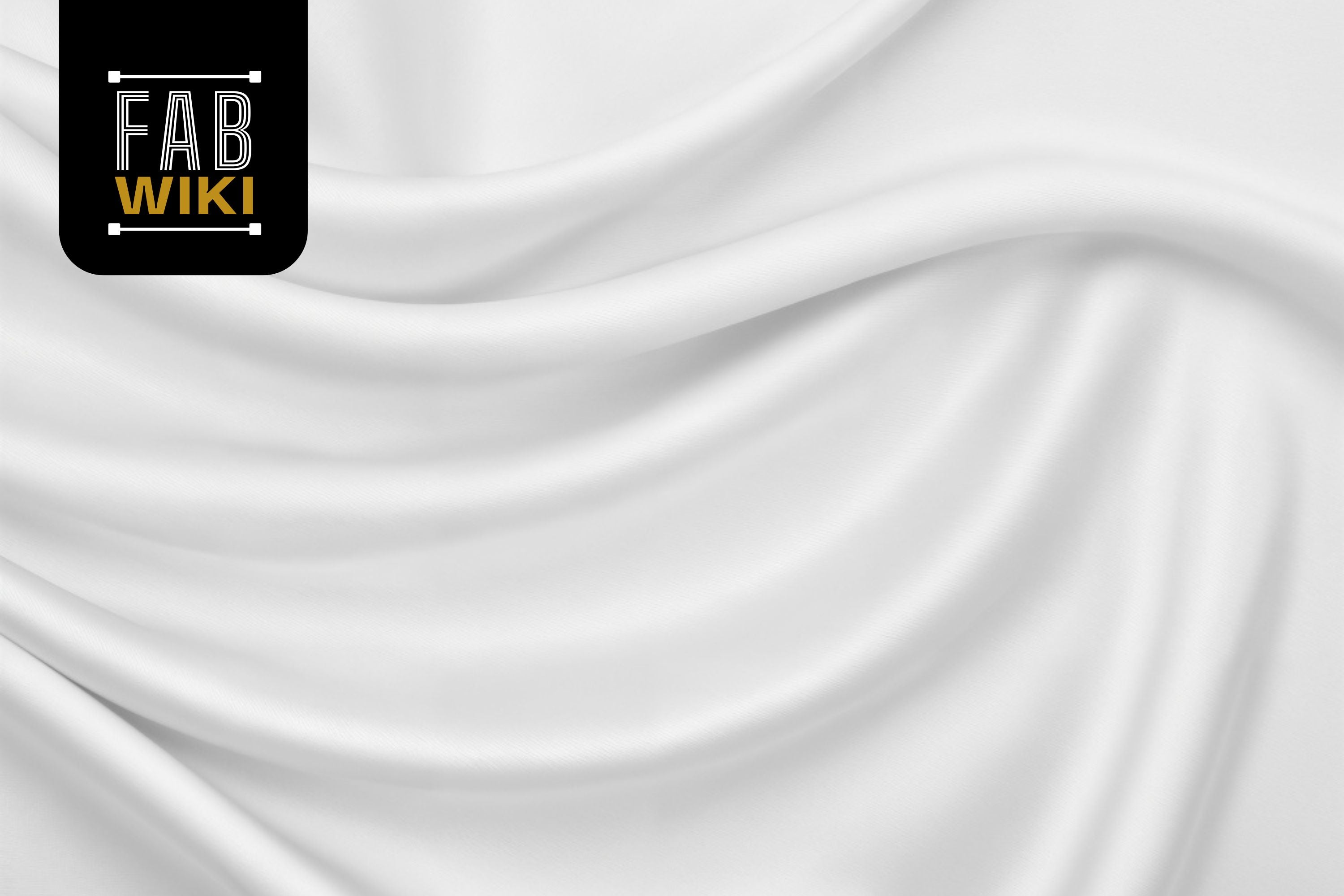Plastic fabrics are everywhere—from raincoats and backpacks to tents, upholstery, and high-performance sportswear. Synthetic fabrics are made for durability, waterproofing, and cost efficiency—features that natural fibres may lack. They offer clear performance benefits, but also raise environmental issues like microplastic shedding and recycling difficulties. This guide offers practical tips for sourcing, specifying, and using synthetic fabrics responsibly.
What Plastic Fabric Really Means
When people say plastic fabric, they're referring to synthetic or polymer-based textiles. These are not natural fibres; they are made using chemicals and are designed to have certain performance qualities. They are used a lot in home textiles, clothes, jewellery, and industry settings.
Main categories include:
- Polyester (PET, rPET) – Versatile, cost-effective, and available in recycled versions.
- Nylon (Polyamide) – Abrasion-resistant and ideal for outdoor gear.
- Polypropylene / Polyethylene – Lightweight and widely used in nonwovens and industrial fabrics.
- PVC / Vinyl-Coated Fabrics – Waterproof, weldable, and heavy-duty.
- PU-Coated Fabrics – Breathable and flexible for activewear and softshells.
-
Elastane / Spandex blends – Used to give clothes more stretch and comfort.
The choice depends on intended use, performance needs, and sustainability goals.
How Plastic Fabrics Are Made – Key Production Steps

The way plastic fabrics are manufactured determines their final properties. Understanding this process helps brands know where durability, waterproofing, or flexibility come from—and who is responsible if quality issues arise.
Production stages include:
- Polymerization – Monomers are turned into polymer chips.
- Extrusion & Spinning – Chips melt and form filaments via spinnerets.
- Drawing & Texturizing – Filaments are stretched for strength and bulk.
- Fabric Construction – Filaments become yarns for weaving, knitting, or nonwoven sheets.
- Finishing & Coating – Waterproofing, laminations, and surface finishes are applied.
- Conversion – Fabrics are cut, sewn, welded, or bonded into final products.
Always ask suppliers which step introduces each property—this ensures accountability.
Main Types of Plastic Fabrics & Their Uses

Different polymers behave differently, and choosing the wrong one can cause expensive failures in production. Knowing the key types and where they work best helps you align fabric properties with your product category.
Examples include:
- Polyester (incl. rPET): Great for activewear, linings, and fleeces; rPET offers a recycled alternative.
- Nylon (Polyamide): Strong, great for bags, shells, and places that get worn down easily.
- Polythene and polypropylene: It is cheap and light, and it is used in medical fabrics and other industries.
- Vinyl- or PVC-coated fabrics: It is waterproof and can be welded, making it perfect for tarps, boat upholstery, and work tools.
- Fabrics With a PU Coat: It's not as stiff as PVC and can bend and bend more easily. It's used to make clothes and sportswear.
- Elastane / Spandex (blends): Adds stretch and comfort to garments like leggings and activewear.
Match the base fabric to mechanical demands, comfort needs, and market positioning.
Performance Properties That Really Matter
Pretty swatches don't guarantee performance. The technical specifications that tell you how the fabric will work in real life are what they're really worth. Always test these in a lab to be sure.
Some important features are:
- Strength in Tension: Load-bearing abilities (straps, workwear).
- Resistance to Wear: Endurance against rubbing/wear (Martindale or Taber tests).
- Head of Hydrostatic: Waterproof grade in millimetres; very important for tents and rain gear.
- MVTR: The feature that lets clothes breathe that makes them more comfortable
- GSM / Denier: Weight and fiber thickness, impacting drape and structure.
- UV Resistance & Colorfastness: Essential for outdoor textiles.
- Chemical & Flame Resistance: Required for use in safety and work settings.
Advantages of Plastic Fabrics
Synthetic fabrics have useful benefits that natural fibres can't match, despite being criticised. Because of this, they are very useful in many fields.
Some benefits are:
- Lasting power: Strong resistance to tension and abrasion makes the product last longer.
- Performance in Bad Weather: Waterproofing and wind protection are provided by coatings and laminations.
- Savings on costs: Scale-efficient, which means it makes more money for mass-market goods.
- Flexibility in design: A lot of different finishes, coats, and laminates to choose from for different looks.
- Can be recycled (rPET): Lessens the need for new fuel feedstocks.
Environmental Trade-Offs You Must Manage
Indeed, synthetics work well, but they also cause real sustainability challenges. These effects need to be talked about by brands right away.
Trade-offs include:
- Getting rid of microfibers: Microplastics that get into waterways during washing processes are a problem.
- Dependence on Fossils: Petroleum is still the source of most plastics.
- Questions about death: Coatings and mixes make recycling harder.
- Paradox of Durability: Without circular answers, fabrics that last a long time will still end up in landfills.
- Solutions: choose rPET, prefer waterborne PU, design for longevity/repair, and implement recycling programs.
Solutions: choose rPET, prefer waterborne PU, design for longevity/repair, and implement recycling programs.
Practical Sewing, Cutting & Finishing Tips

Even the best fabric can fail in production if not handled correctly. Clear factory guidelines reduce errors and urgent fixes.
Some tips are:
- Cutting: Always use sharp rotating knives and get new ones often.
- Feet and Needles: For areas that are coated, use Teflon or walking feet.
- Seams: For waterproof items, use taped or welded seams.
- Getting close: Check the adhesives; some can hurt the coatings.
- Testing the prototype: Before scaling, samples should always be put through abrasion, wash, and UV stress tests.
Document everything in your tech pack to ensure consistency.
Procurement Checklist – Must-Haves for Sourcing
To avoid surprises that cost a lot of money, make sure that providers provide full documentation and testing.
Checklist:
- Datasheet: GSM, denier, tensile strength, waterproofness, breathability.
- Certificates: OEKO-TEX, REACH, GRS/RCS for recycled fabrics.
- Swatches: Large (10×12 cm+) to test drape and hand feel.
- Lab Reports: For colorfastness, UV resistance, and wash tests.
- MOQ & Lead Times: Clarify finish, print, and coating options.
- Mill Transparency: Confirm effluent handling and finishing processes.
Lack of documentation = supplier risk.
Sustainability Best Practices for Brands
Marketing green isn't enough—brands must integrate sustainability into operations and sourcing.
Best practices:
- Source certified rPET (GRS/RCS) with documentation.
- Reduce shedding with engineered yarns.
- Choose waterborne PU or low-impact finishes.
- Design for repair, longevity, and modular replacement.
- Pilots take-back programs before making eco-claims.
Care & Maintenance Guidance for Customers
Empowering customers with care suggestions decreases returns, increases product life, and enhances sustainability.
Recommendations:
- Wash cold, gentle cycles to reduce shedding.
- Promote wash bags/filters to capture microplastics.
- Air-dry coated fabrics—avoid dryers.
- Clean with mild soap, not abrasives.
- Encourage early patching/repairs; provide kits if possible.
Common Buyer Mistakes to Avoid
Even experienced buyers make sourcing errors that cost time and money. Avoid these pitfalls:
- Buying based on photos without swatches.
- Skipping lab tests on waterproofness and durability.
- Using unrecyclable coatings.
- Assuming factories can weld or tape seams.
- Ignoring microfiber risk in product design.
Conclusion – Smarter Plastic Fabric Sourcing

Plastic fabrics are powerful tools when specified and sourced properly. They provide durability, waterproofing, flexibility, and cost advantages—but require careful planning to avoid environmental and performance pitfalls.
Next steps for brands:
- Draft detailed tech packs with specs.
- Request large swatches + lab reports.
- Run pilot tests before bulk orders.
- Provide clear care instructions to customers.
- Invest in certified rPET and recycling initiatives.
Plastic fabrics aren't bad in and of themselves; they're necessary when used correctly. Technical diligence with sustainability practices helps brands make high-quality goods while also leaving less of an impact on the environment.
FAQ
Q1: What Is Plastic Fabric Made Of?
Plastic fabrics are made from synthetic polymers created through chemical processing. The most common types include polyester (PET, rPET), nylon (polyamide), polypropylene (PP), polyethylene (PE), PVC (vinyl), and polyurethane (PU). Some are derived from virgin fossil-based feedstocks, while others, such as rPET, are made from recycled materials like PET bottles.
Q2: Is Plastic Fabric Waterproof?
Not all plastic fabrics are inherently waterproof. Polyester and nylon are naturally water-resistant but usually require laminations or coatings (PU, PVC, TPU) to achieve full waterproofing. For outdoor or performance use, ensure hydrostatic head ratings are tested and that seams are taped or welded, since untreated stitching can leak.
Q3: How Can Microfiber Shedding Be Reduced?
Microfiber shedding is a major environmental concern when washing synthetics. To minimize it, brands should specify tighter filament yarns, higher filament counts, and engineered yarn structures that resist breakage. On the consumer side, recommend washing in cold cycles, using microfiber-catching bags/filters (like Guppyfriend), and avoiding tumble drying.
Q4: Can Plastic Fabrics Be Recycled?
Recycling depends on the type of fabric and how it was made. It is possible to recycle mono-material fabrics like 100% polyester (PET) or rPET, but it is hard to recycle blends, coated, or laminated fabrics and they usually end up in landfills. Complex fabrics are getting chemical recycling technology, although availability is limited. Always check supplier recycled content claims using GRS/RCS certifications.
Q5: What Technical Specs Should I Request From Mills?
To ensure performance and avoid production failures, always ask suppliers for a full technical datasheet and standardized lab reports. Key specifications include:
- GSM (grams per square meter): fabric weight.
- Denier/filament count: fiber thickness and strength.
- Tensile strength: load-bearing capacity.
- Abrasion resistance: Martindale/Taber cycles.
- Hydrostatic head (mm): waterproofness rating.
- MVTR (Moisture Vapor Transmission Rate): breathability.
- Colorfastness & UV resistance: especially for outdoor textiles.
- Wash durability tests: shrinkage, seam strength, and finish stability.
👉 Always validate with third-party lab reports rather than relying only on mill claims.
We also happen to be a magnet for suggestions, and would love to catch yours….throw us yours on hello@fabriclore.com




